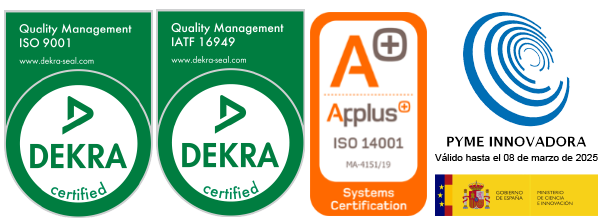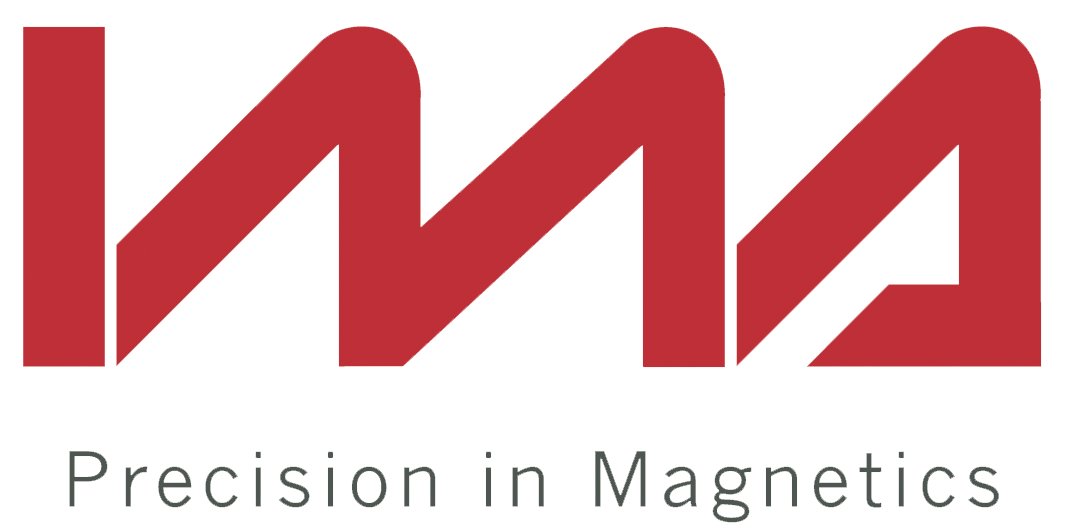Advantages of using magnets in the automotive sector
The automotive sector is one of the fields of industry and science in which more research is carried out and in which technological development is more pronounced. From the first cars in which, because there were none, there were no safety belts, to the latest hybrid or fully electric models, many years have passed of innovation, development and uninterrupted progress in one of the most cutting-edge industries of all and, in Europe, one of the ones that generate the most employment.
Magnets, a key element for industry
Within the automotive industry, a fundamental element in understanding not only the operation of the latest minivan models, but also the entire vehicle assembly line is the magnet. Magnets in the automotive industry have been in use for decades and have a wide range of functions, both on the assembly line and in the vehicle itself.
Thus, we can find magnets in the number of elements of a vehicle, such as, for example, electric windows, which are activated through the use of several magnets. In the same way, something similar happens with other elements of the vehicle, such as the windshield wipers, the fastening of roofs and doors or the movement motors of the different seats.
On the other hand, we see magnets destined for the automotive world in other parts of the car that are much more sensitive and fundamental, such as, for example, the ABS braking system or the gearboxes of automatic cars in which the magnets are responsible for changing gears. In addition, the position sensors that have been so popular when parking a car in total safety, also work with magnets or other useful devices, such as the mechanism that detects whether or not we have put on seat belts.
Another thing to highlight about magnets in the automotive sector is the fact that in general they have the advantage of being able to automate processes and make the different parts of the vehicle more efficient and safe to use as opposed to the counterparts that do not use magnets. In this way, electric windows, automated gearboxes or ABS systems achieve, thanks to magnets, higher safety levels than what is achieved without them.
Presence throughout the assembly process
On the other hand, the use of magnets in the automobile sector is not exclusive to the vehicle itself; they play a very important role in the entire automobile manufacturing process. In this way, different types of magnets are used throughout the car assembly line to manipulate or improve the different parts and elements that make up the vehicle.
In this way we can see, for example, how small magnets are used to manipulate and install components in different parts of the vehicle and also to transport and process the different materials that form part of the vehicle, both those of high technological value and others less technologically advanced such as, for example, the bodywork and the chassis.
There is no doubt that the arrival of magnets in the sector of evolution is always accompanied by technological development. Thus, if they first arrived at the assembly lines, then they would do it to the components of high technological value adding value and quality and doing that, comparatively, their intervention in the processes of construction of the automobile industry added a lot of value to the final product.
Should I buy a neodymium magnet or a ferrite magnet?
To decide on the right type of magnet, you must know the purpose for which you need the magnet. To avoid unwanted surprises later, it is advisable to define exactly what the magnet is used for, as there are also differences in this case. For example, one or the other type is recommended, if the magnet, needs to withstand high temperatures, or this factor is not necessarily relevant. The same happens with outdoor magnets, they are very different from those used in the office or at home.

It is worth knowing, therefore, that ferrite magnets can be used under high temperatures of up to 250 degrees. This type of magnet is recommended for outdoor uses, but to a lessor extent for indoor areas, where aesthetics may be more important than magnetic force. The advantage of neodymium magnets is their strong magnetic adhesion capacity. Therefore, they are ideal when no large areas are available, you need to save space and the magnet must adhere with force. These magnets usually have a coating that makes them easy to customize and adapt to the decoration of the room.
Differences between neodymium magnets and ferrite magnets?
In comparison, a neodymium magnet of the same size as a ferrite magnet is far stronger, so it is recommended in cases where space is limited. The neodymium magnet shows an adhesion up to ten times stronger than the ferrite magnet. The latter, however, is cheaper, but also more stable in price, since elements of rare earths are not used in their processing as is the case with neodymium magnets, which are subject to significant fluctuations in prices. In addition, ferrite magnets can be used at temperatures of -40 degrees to 250 degrees Celsius, while neodymium magnets lose their magnetic force at temperatures greater than 80 degrees.
Another interesting difference is that ferrite is resistant to corrosion by chemicals and suitable for outdoor use, but neodymium is not. Neodymium breaks easily, while ferrite is much more resistant and resists breakage. Both magnets retain their magnetic force over time, and there is no reason to fear losing the magnetism naturally. However, ferrite magnets can be demagnetized by the influence of stronger neodymium magnets. This process can also reverse the magnetic poles of the magnet.
As we have already indicated, ferrite magnets are not coated and have a dark gray color. Therefore, they are not so easy to use in decorative situations and to adapt to interior designs. The neodymium ones have a silver color due to their nickel and copper based coating and they combine perfectly with decorations. Magnets near devices such as pacemakers or hearing aids can affect their function. If there is a risk that the magnets will approach such devices, we recommend using ferrite magnets, since they are less strong than neodymium magnets.
In case of doubt, do not hesitate to ask. At IMA, we help you choose the type of magnet that best suits your needs. Our professionals are trained to advise you and help you make the right decision.










